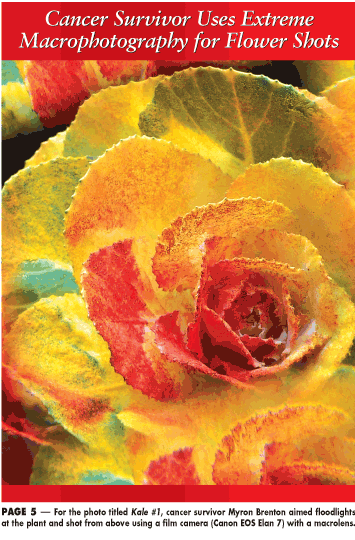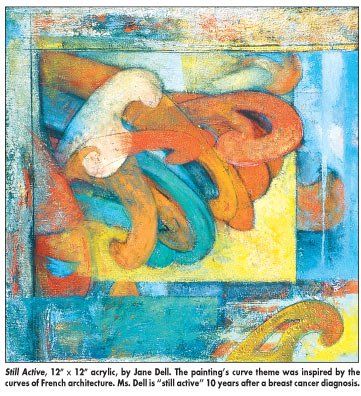Artists Turn Flowers & Curves Into 'Forms' and 'Figures'
After 31 years as a freelance writer, Myron Brenton was finally able to quit—"liberation day," he calls it—and devote more time to photography. A diagnosis of prostate cancer did not stop Mr. Brenton from traveling the world (and photographing the world) with his wife Irene. It was another disease, Alzheimer's, which struck his wife, that kept the Brentons at home in Manhattan and led Mr. Brenton to focus his art on photography he could do in his apartment
NEW YORKAfter 31 years as a freelance writer, Myron Brenton was finally able to quit"liberation day," he calls itand devote more time to photography. A diagnosis of prostate cancer did not stop Mr. Brenton from traveling the world (and photographing the world) with his wife Irene. It was another disease, Alzheimer's, which struck his wife, that kept the Brentons at home in Manhattan and led Mr. Brenton to focus his art on photography he could do in his apartment (see photograph on page 1).

Mr. Brenton shops the flower markets in Union Square and Chelsea near his home. Then in a process known as extreme macrophotography, he focuses the macrolens on his Canon EOS Elan 7 to get "into the flower," he told ONI. Mr. Brenton says he will continue to use film as long as they make it. "I make flowers into forms," he said of his close-up photographs, which he enters into juried group competitions around the country.
Mr. Brenton, who receives Lupron shots for his recurrent prostate cancer, says that the return of his cancer "really doesn't bother me for myself, but it bothers me in terms of my wife." Lacking other family, Mr. Brenton cared for his wife alone for several years and now talks with her daily and visits her weekly at her assisted living residence. "She depends on me, so it scares me that something could happen to me," he said.

In the meantime, he lives what he calls his "two lives," one devoted to his wife and one to his art. "It is a difficult life and also a rich life. I don't let emotions about cancer interfere with it," he said.
Jane Dell, an abstract artist working mostly in acrylics, began annual mammograms in her 40s, due to a family history of the disease. At age 47, she was diagnosed with stage I breast cancer. After lumpectomy/radiation therapy and adjuvant tamoxifen, Ms. Dell has been cancer free for 10 years.
The title of one of her paintings Still Active (shown below) came in response to the question "Are you still painting?" that she often heard from friends she hadn't seen for a while after her diagnosis and treatment. "Cancer didn't really change anything," she told ONI, "except perhaps to provide even more motivation to continue doing what I love." Her most recent series of works was inspired by the curves of French architecture. "I like to play with shapes, space, color, and texture in my compositions," she said. "The curves have become symbolic to me, taking on the shapes of human figures relating to each other in day-to-day life." Ms. Dell may be contacted about her work at JaneDell@comcast.net.
Navigating Treatment Intensification in Metastatic Hormone-Sensitive Prostate Cancer
A patient case of a 50-year-old man with hormone-sensitive prostate cancer sparked a debate among oncologists regarding the best course of action.